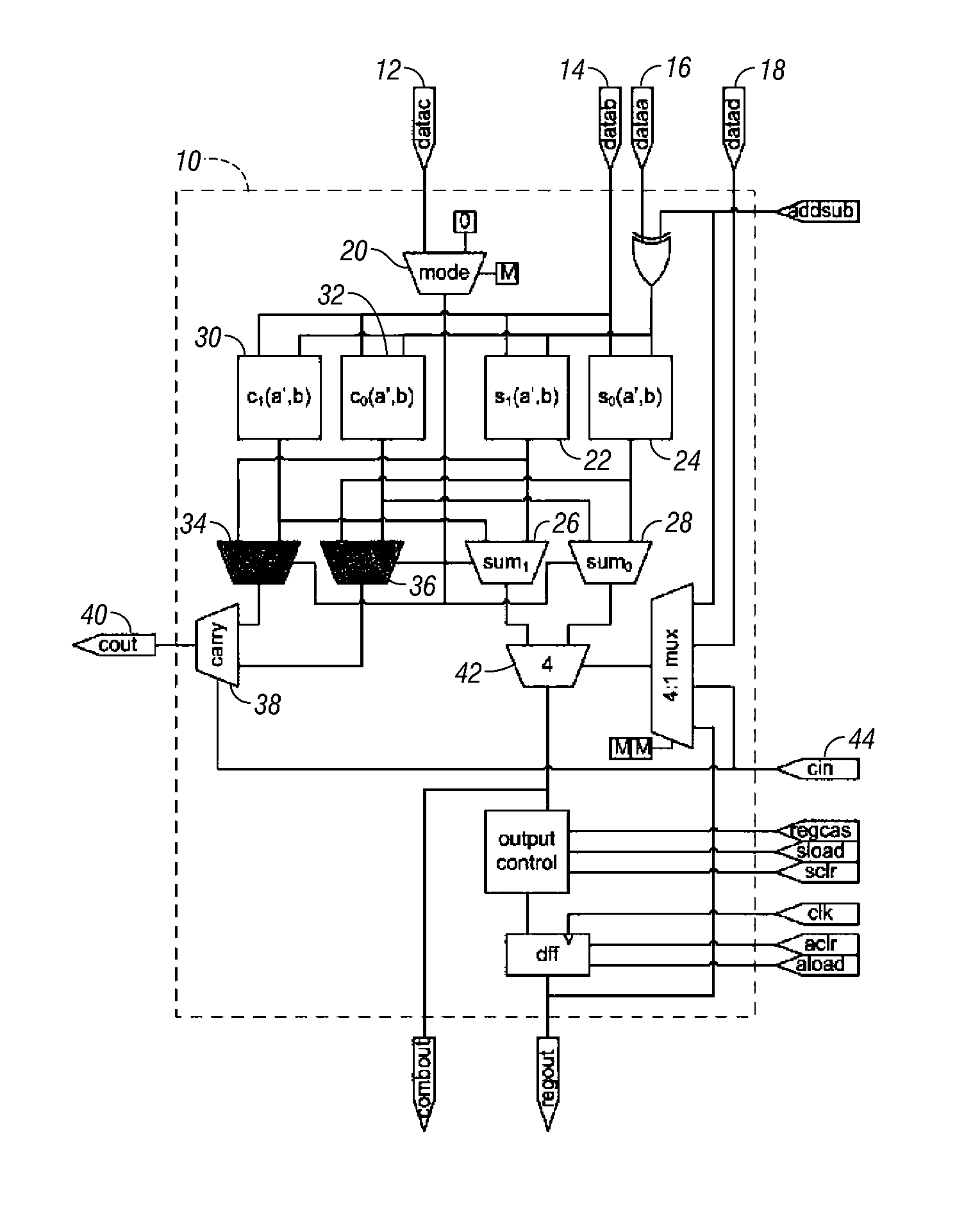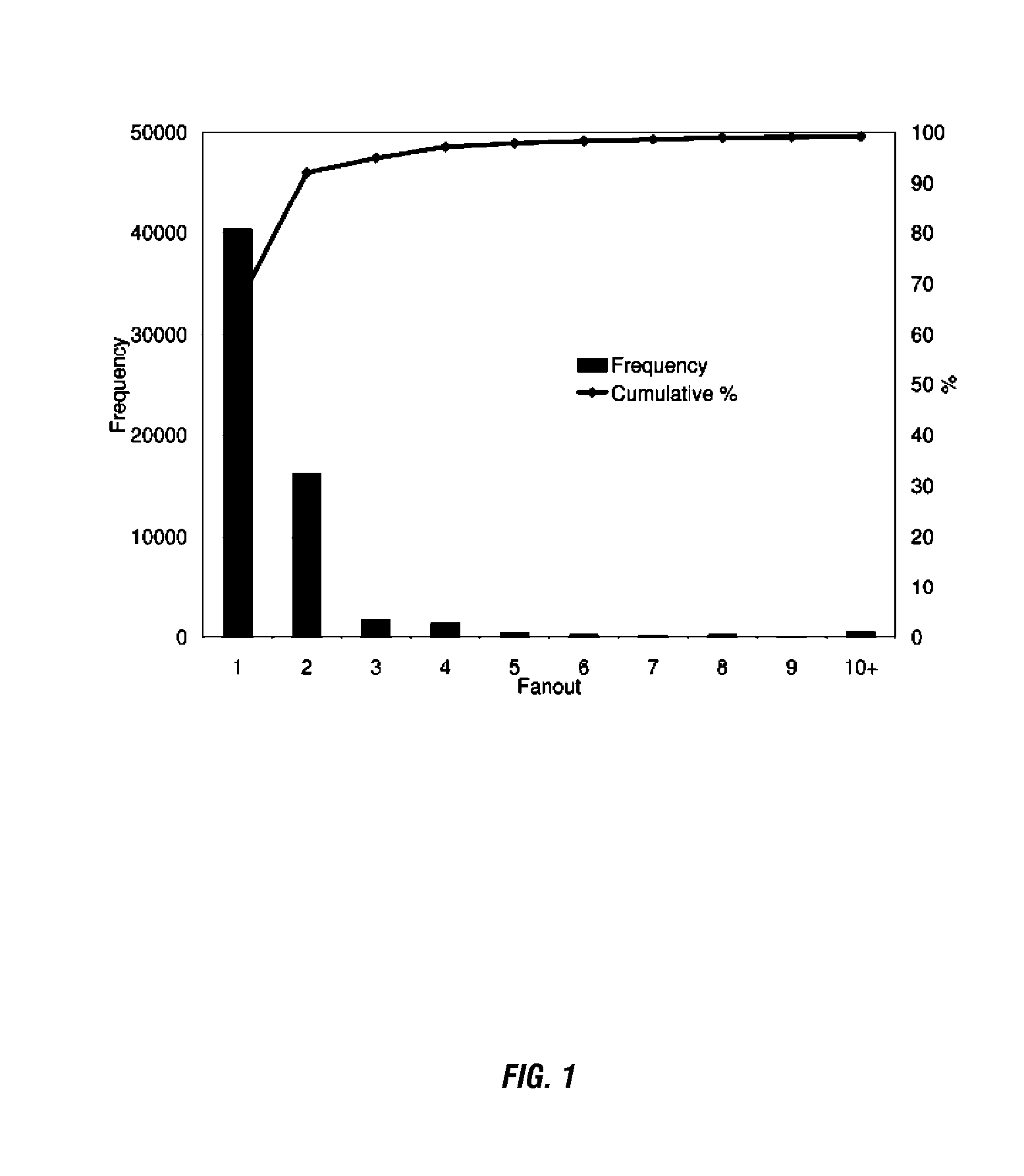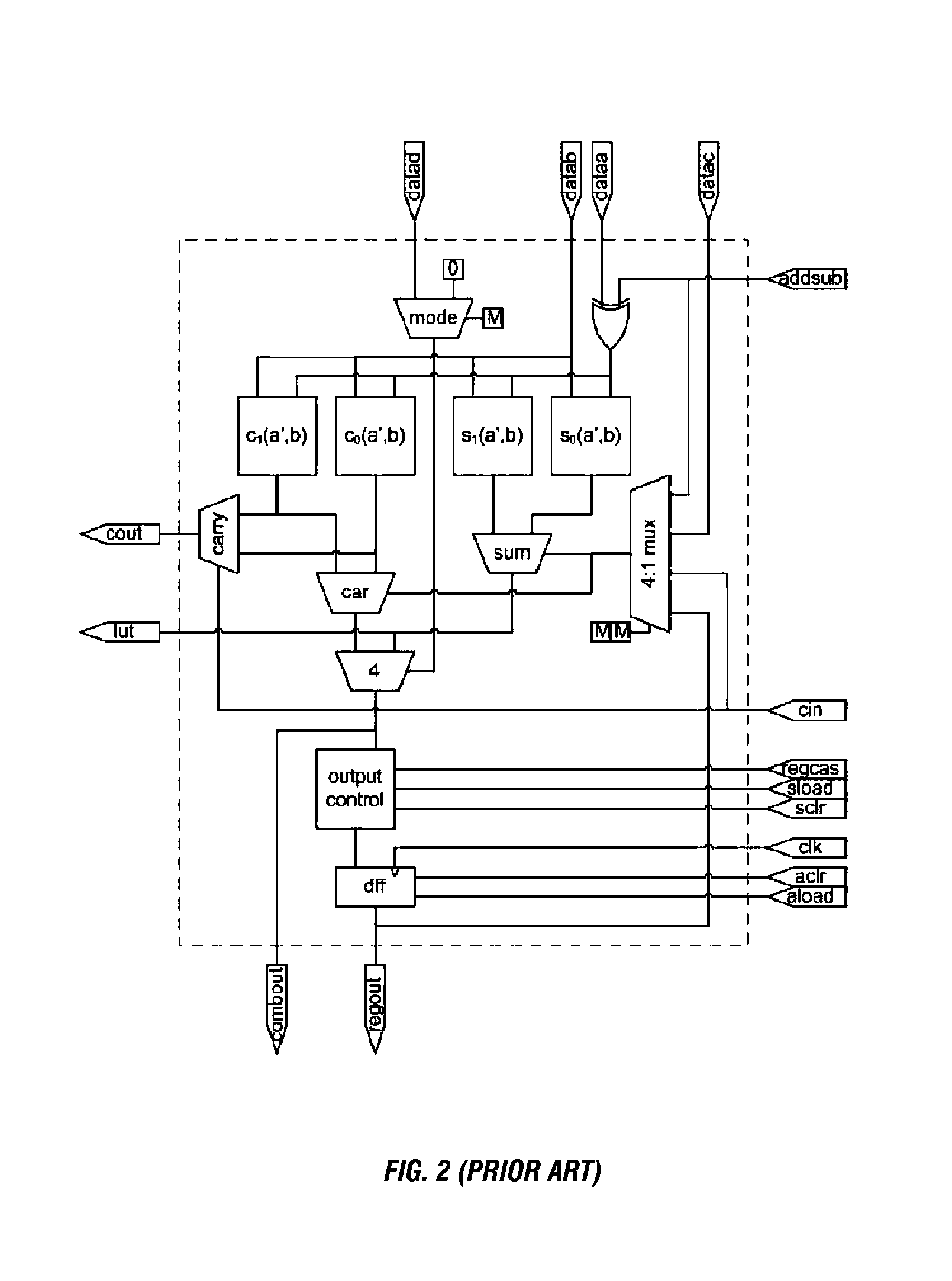Logic element architecture for generic logic chains in programmable devices
a logic element and logic chain technology, applied in the field of reconfigurable fabrics, to achieve the effect of facilitating the reuse of carry chains, improving design performance, and minimal cos
- Summary
- Abstract
- Description
- Claims
- Application Information
AI Technical Summary
Benefits of technology
Problems solved by technology
Method used
Image
Examples
Embodiment Construction
[0021]Applications vary greatly from one to another—DSP applications are heavily arithmetic in nature, while many security algorithms are based on Boolean logic and use chains sparingly. For instance, an FFT is dominated by addition and subtraction with 57.6 percent cells in chains, while DES3, despite its complexity, predominately uses tabular look-ups with only 0.8 percent chain cells. FIG. 1 shows an aggregate distribution of net fanout for a sampling of designs available at OpenCores [4]. Greater than 60 percent of the nets in the designs are a direct connection between adjacent logic cells.
[0022]Carry chain reuse is defined as a logic chain that has been converted to use the arithmetic chain as a fast interconnect structure between adjacent cells. This forces these cells to be placed next to each other during place and route (PNR), and eliminates the need for that connection to traverse a configurable routing structure. In general, this sampling of designs seems to underutilize...
PUM
 Login to View More
Login to View More Abstract
Description
Claims
Application Information
 Login to View More
Login to View More - Generate Ideas
- Intellectual Property
- Life Sciences
- Materials
- Tech Scout
- Unparalleled Data Quality
- Higher Quality Content
- 60% Fewer Hallucinations
Browse by: Latest US Patents, China's latest patents, Technical Efficacy Thesaurus, Application Domain, Technology Topic, Popular Technical Reports.
© 2025 PatSnap. All rights reserved.Legal|Privacy policy|Modern Slavery Act Transparency Statement|Sitemap|About US| Contact US: help@patsnap.com



